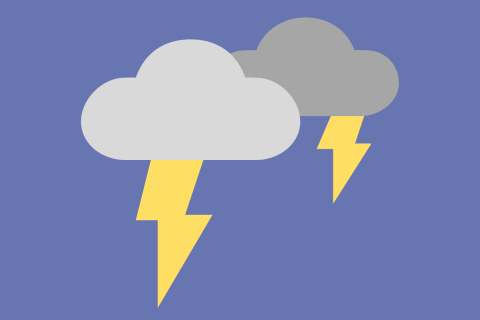
The word ‘anxiety’ is thrown around a lot these days. There are endless memes about anxiety circulating social media, and the topic is (thankfully) becoming less taboo in mainstream media.
We all feel anxious now and then – it’s a normal part of life. But having an anxiety disorder is a lot different to simply feeling anxious before a big presentation or going for a job interview.
Anxiety is the most common mental health condition in Australia. Research shows more than a quarter (28%) of young Aussies are living with anxiety, and the numbers continue to rise each year.
Some people may not realise ‘anxiety’ is an umbrella term that includes many different mental conditions. Knowing some of the common types of anxiety might help you better understand the differences between these mental illnesses.
Generalised Anxiety Disorder
Generalised Anxiety Disorder (GAD) is characterised by excessive anxiety and worry in everyday situations where someone without this condition might not see a reason to feel anxious or worried.
People with GAD are anxious, worried, and have a feeling of dread that something bad will happen most of the time – not just when a stressful event provokes it. Seemingly small inconveniences like being late for an appointment can lead to uncontrollable and exaggerated worry. These feelings are intense, persistent, and can impact their everyday lives and relationships.
Social Anxiety Disorder
Social Anxiety Disorder (or social phobia) is more than just feeling nervous before giving a speech or being too shy to introduce yourself at an event.
This condition involves an intense fear of social situations – particularly situations that are unfamiliar or where you feel you’ll be watched or judged by others. People with social anxiety might feel excessively self-conscious in everyday social situations, and have intense anxiety for a long period of time leading up to a social event.
Some triggers of social anxiety might include meeting new people, speaking up in a meeting at work, going on a date, or using public restrooms. Some people with this disorder go to great lengths to avoid social situations, which can have a significant impact on their life.
Panic Disorder
Panic Disorder involves repeated, unexpected, and disabling panic attacks that aren’t always caused by a specific situation. Panic attacks might happen without any warning or trigger, and can involve hyperventilation, racing heart, shaking, dizziness, and fear of death.
People with a panic disorder often worry about having their next panic attack, and might even avoid places where they’ve had a panic attack in the past out of fear it might trigger another one.
Agoraphobia
You might have heard this term being used to describe someone who is afraid to leave their home, but that’s a common misconception. Agoraphobia isn’t just a fear of leaving the house – it’s a fear of situations and places that might make you have a panic attack or feel stressed, trapped, or embarrassed. It can be a result/complication of a panic disorder.
People with agoraphobia might be scared to leave their home or leave their home on their own, be in a crowd or waiting in a queue, use public transport, visit enclosed spaces like movie theatres or small shops, or visit open spaces like a car park or shopping centre.
Specific Phobias
While it’s not unusual to be afraid of certain things like snakes, heights, or flying on a plane, people with a phobia experience feelings of panic and terror that others might consider irrational and out of proportion to the threat. Many people with a phobia even recognise that their anxious response is exaggerated, but can’t help it. Research shows specific phobias generally develop in childhood and are twice as likely to be diagnosed in women compared to men.
A specific phobia might be related to animals or insects, thunder or heights, blood or needles, bridges or driving, and just about anything else you can think of that is subjectively unpleasant (or seemingly ordinary). Some people with specific phobias experience related panic attacks and generally avoid situations where they may be faced with the phobic stimulus.
These are just some of the different types of anxiety. There are many other mental health conditions where anxiety is present, including Obsessive Compulsive Disorder (OCD) and Post-Traumatic Stress Disorder (PTSD).
Many people with other mental health conditions also experience anxiety, and people with an anxiety disorder often experience other conditions, such as depression.
Our tertiary-qualified counsellors are experienced in supporting people with anxiety and other mental illness. Learn more about our counselling options and how to book an appointment here.
If you’re living with anxiety, you might find this advice from one of our counsellors helpful.
